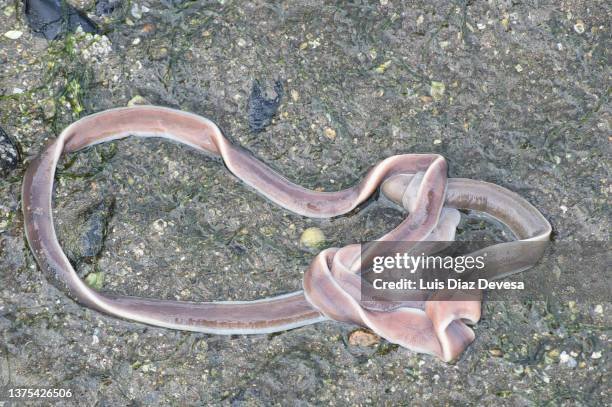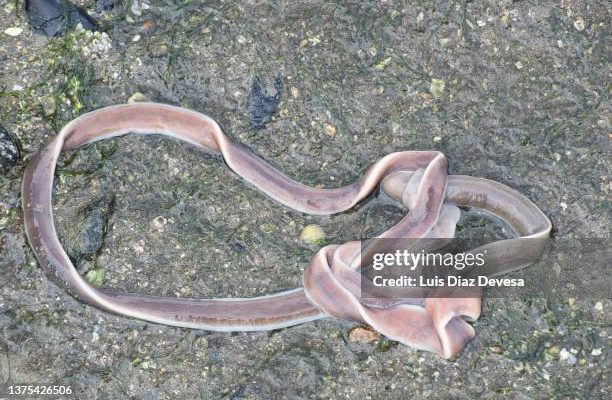
Ribbon worms, also known as nemerteans, are soft-bodied, elongated creatures that can be as simple as a foot long or stretch up to 30 feet! They do not have a hard shell like snails or clams, which makes their response to low tide even more interesting. They thrive in marine environments, from sandy shores to rocky cliffs, and they have some rather clever tricks up their sleeves to survive when the tide goes out. Let’s dive in and explore how these slippery little guys cope with low tide.
What Are Ribbon Worms?
Honestly, before we dig into their low tide behavior, it’s helpful to know a bit about ribbon worms themselves. Found in a variety of colors—ranging from deep reds to vibrant greens—these marine invertebrates have the unique ability to regenerate lost body parts. Imagine if you could just grow a new arm if you accidentally bumped it into a door! That’s ribbon worms for you.
Most ribbon worms are found in intertidal zones, which are areas that are underwater during high tide and exposed during low tide. This is crucial to their survival because their environment can change dramatically depending on the time of day. While they can be found in many oceanic regions, they thrive in rich coastal areas where they can hunt for food and find shelter.
When the tide recedes, ribbon worms have a few survival strategies that help them stay safe and hydrated. Being soft-bodied means they can easily dry out. But they have developed special behaviors to navigate these tricky situations.
Low Tide and the Ribbon Worm’s Habitat
During low tide, the habitat of ribbon worms changes significantly. The sandy and rocky shores become a new landscape, exposing hidden grooves and crevices where they can seek shelter. Ribbon worms are smart and adapt their behavior based on these changing environments.
You might be wondering how they manage to survive the harsh conditions of low tide. Well, they typically burrow into the sand or find refuge in the shadows of rocks. This helps them avoid extreme temperatures and prevent dehydration. Some ribbon worms even use their long, sticky proboscis to anchor themselves in place, making it harder for predators to pull them out of hiding.
The landscape during low tide can be pretty barren, but for a ribbon worm, it’s a treasure trove of opportunities. They often search for small crustaceans, mollusks, and other small marine creatures that might also be trapped in the shallow tide pools. It’s like a buffet for these little guys, as they feast on whatever comes their way.
Feeding Habits During Low Tide
Now that we’ve set the scene, let’s talk about how ribbon worms feed during low tide. When the water recedes, many marine animals struggle to find food, but not our resilient ribbon worms. These creatures are skilled hunters with a unique way of catching their prey.
Using their long catch-and-release proboscis, ribbon worms can capture unsuspecting prey with surprising speed. Here’s the thing: they can shoot this proboscis out to snatch small animals like shrimp or small fish, then reel them back in for a meal. It’s like a mini fishing rod—except they don’t need a fishing license!
Their diet can be varied, including:
- Small crustaceans
- Worms
- Mollusks
- Larvae
When the tide is low, ribbon worms often take advantage of the exposed areas to hunt efficiently. They’re like crafty little predators who know all the best spots to nab a meal, ensuring they have enough energy to carry on until the tide comes back in.
Behavioral Adaptations to Avoid Predators
Survival isn’t just about finding food; it’s also about staying safe from predators. When the tide goes out, ribbon worms need to be extra careful. They have a few neat tricks up their sleeves to avoid becoming someone else’s dinner.
First off, their ability to burrow is a game changer. By moving into the soft sand, they can hide from birds, fish, and even other marine predators that roam the tide pools in search of a snack. This not only keeps them out of sight but also protects their delicate bodies from drying out in the sun.
Additionally, some ribbon worms have a defense mechanism: they can produce toxic substances to deter potential predators. Imagine being a hungry fish and finding out that your meal could make you sick! This surprising adaptation adds an extra layer of safety for these clever creatures as they navigate the challenges of low tide.
Water Conservation Techniques
You might be asking how ribbon worms handle the drying effects of low tide. Well, they have developed some clever ways to conserve water and avoid dehydration. Just like a cactus stores water to survive in a desert, ribbon worms use a few nifty methods to keep their bodies hydrated.
One strategy is to cover themselves in a mucus layer, which acts like a protective shield from the dry air. This layer retains moisture, allowing them to survive longer while they wait for the tide to return. Additionally, they typically remain inactive during low tide, resting and conserving energy until the water comes back.
Furthermore, ribbon worms can enter a state of dormancy, almost like a mini hibernation. By slowing their metabolism, they save energy and water—ideal strategies for a creature that’s often exposed during low tide.
The Importance of Ribbon Worms in the Ecosystem
So, why should we care about ribbon worms and their behavior during low tide? These little creatures play a vital role in their ecosystems. As both predator and prey, they help maintain the balance of marine life.
Ribbon worms contribute by controlling populations of smaller marine animals, ensuring that no single species takes over. On the flip side, they also provide meals for larger predators, which rely on them as a food source. This interconnected web of life showcases how every creature, no matter how small, has its part to play in the grand scheme of nature.
Moreover, by understanding how ribbon worms adapt to changing tides, we gain insight into the health of marine ecosystems. Changes in their populations can indicate shifts in environmental conditions, helping scientists monitor changes that might affect other sea life.
In summary, ribbon worms exhibit fascinating behavior during low tide that highlights their incredible adaptations and resilient nature. From hunting in exposed areas to using clever strategies to avoid dehydration and predators, these creatures showcase the wonders of life in marine environments.
Understanding their behaviors not only helps us appreciate the complexity of ecosystems but also emphasizes the importance of protecting these environments. The next time you stroll along the beach at low tide, keep an eye out for these remarkable animals. They’re not just slimy little creatures; they’re vital players in the ongoing story of life in our oceans.

